The way it's supposed to be…
By Mary Bigelow
Posted on 2014-12-10
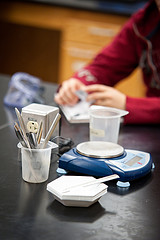 I have been trying to incorporate more inquiry-based investigations into my biology curriculum. But the students are upset. They want to stick with the cookbook labs where they follow the procedure and complete a data table that I give them.
I have been trying to incorporate more inquiry-based investigations into my biology curriculum. But the students are upset. They want to stick with the cookbook labs where they follow the procedure and complete a data table that I give them.
—T., Colorado
It seems like you’ve noticed how high school students (and some of their parents) have definite ideas of how schools and classes should operate. If you deviate, you get pushback that can range from dirty looks to complaints to outright defiance. Even what may appear to be small changes such as an updated cafeteria menu, a different bell schedule, or a new classroom routine can set off this pushback.
If we try a new strategy once and it doesn’t fit the modus operandi, the students may assume that if they fuss or refuse, we’ll say “Well, that didn’t work” and classroom life will return to the-way-things-are-supposed-to-be. This certainly happened to me when I tried a different instructional strategy, an alternative form of assessment, or a new classroom management routine. Students would roll their eyes or complain before we even started.
We are such creatures of habit! By the time students are in the upper elementary grades, they have a definite idea of what school is “supposed to be.” Whenever teachers or administrators deviate from this comfort zone, the defenses go up.
This is true in other subject areas, too. I read an article about a French IV teacher who wanted to focus on conversations and authentic activities (all in French) instead of the traditional emphasis on grammar and vocabulary. Sounds good, right? But her students (mostly seniors) were outraged. She had changed the rules! These students were taking AP and other advanced level courses, and they saw the traditional French class as an easy A while they concentrated on their “real” courses. They knew they were good at memorizing and test-taking, but this conversation thing was a challenge that would require a different kind of effort.
The literature has discussions of how “inquiry” is actually a continuum of students assuming more responsibility for their investigations. In all fairness to the students, it might be overwhelming for them to leap from the comfort zone of cookbook labs to full inquiry in which they are assigned to formulate a question, design the procedure, and conduct the investigation. How have you approached this transition? If this is uncharted territory for the students, they will need to see examples of researchable questions, develop a repertoire of lab skills, and learn appropriate ways to organize and display their data. This is where you use your skills as a teacher to model and provide feedback. (See the blog From Cookbook to Inquiry for a description of an inquiry continuum and a link to an NSTA resource collection on the topic.)
Your question also made me think about how will students adapt to the performance expectations of the Next Generation Science Standards (NGSS). How will they apply the core ideas, make connections with the cross-cutting concepts, and incorporate scientific practices? If the NGSS performance expectations are drastically different from activities and assessments in their current science classes, what can we do to help students adapt to the changes, as we adapt to them ourselves?
If we know something is the right thing to do, a research base is behind it, and it will ultimately pay off in better learning or a better classroom environment, we should stick with it and explain why we are doing something new or different. The task should be divided into manageable steps. We may need to model the activity or strategy frequently. We need to give students time to adapt, keep at it, and continue to provide guidance, support, and encouragement as they move through the inquiry continuum. When students see the value, what was once a new idea becomes part of the-way-things-are-supposed-to-be.
STEM workers in the trades
By Peggy Ashbrook
Posted on 2014-12-09
 On OPB radio’s Think Out Loud interview segment, “Examining The Shortage Of Craft Workers In Oregon,” Dave Miller interviews trade industry experts.
On OPB radio’s Think Out Loud interview segment, “Examining The Shortage Of Craft Workers In Oregon,” Dave Miller interviews trade industry experts.
Listen to Connie Ashbrook, Executive Director of Oregon Tradeswomen, Inc., talk about construction and manufacturing apprenticeship programs, referencing a Brookings Institute report, “The Hidden STEM Economy,” about STEM careers that do not require a four-year college degree. Ashbrook says the lack of knowledge of blue collar professions, including the trades, is keeping young people from pursuing jobs such as Auto Techs and Mechanics, Carpenters, Plumbers, Registered Nurses and Welders, which are incredibly important to our economy.
Other guests are Steve Malany, President of the board of directors at the Associated General Contractors Oregon-Columbia Chapter, and Tia Vonil (pictured above), Graduate of the Oregon Tradeswomen’s Pathways To Success Program and a third-year union electrical apprentice in Portland.
In early childhood classrooms we often learn about “community helpers” such as firefighters and doctors. Let’s make sure we include workers such as plumbers too.
Full disclosure: I am proud to be Connie’s sister!
 On OPB radio’s Think Out Loud interview segment, “Examining The Shortage Of Craft Workers In Oregon,” Dave Miller interviews trade indu
On OPB radio’s Think Out Loud interview segment, “Examining The Shortage Of Craft Workers In Oregon,” Dave Miller interviews trade indu
#NSTA14 Long Beach Stories
By Lauren Jonas, NSTA Assistant Executive Director
Posted on 2014-12-09
 Our recent NSTA conference on science education in Long Beach, CA, was held in collaboration with the California Science Teachers Association (CSTA). How fitting that one of the largest area conferences we’ve ever had was the result of amazing collaboration, because it all really does comes down people—and last week we gathered with an incredibly enthusiastic, smart group. The ideas bubbled up, networks were forged or enforced, and teachers found themselves re-invigorated. For a visual snapshot of the conference, check out our Storify curation of #NSTA14 Long Beach.
Our recent NSTA conference on science education in Long Beach, CA, was held in collaboration with the California Science Teachers Association (CSTA). How fitting that one of the largest area conferences we’ve ever had was the result of amazing collaboration, because it all really does comes down people—and last week we gathered with an incredibly enthusiastic, smart group. The ideas bubbled up, networks were forged or enforced, and teachers found themselves re-invigorated. For a visual snapshot of the conference, check out our Storify curation of #NSTA14 Long Beach.
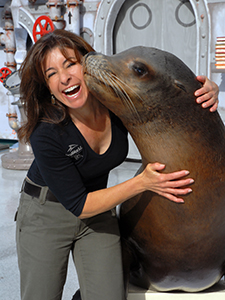 The conference kicked off with featured speaker Julie Scardina (of SeaWorld and Busch Gardens: San Diego, CA), who used animal ambassadors to demonstrate that it takes a more sophisticated understanding of ecology, biology, and environmental science to save our planet’s biodiversity. NSTA President Juliana Texley echoed the conference theme (“catch the wave”) as she introduced Scardini, telling the crowd that “A tsunami begins with hidden energy. As it travels across the ocean, it is barely noticeable (only a centimeter or two of wave). But when it hits the shore, it explodes with energy.
The conference kicked off with featured speaker Julie Scardina (of SeaWorld and Busch Gardens: San Diego, CA), who used animal ambassadors to demonstrate that it takes a more sophisticated understanding of ecology, biology, and environmental science to save our planet’s biodiversity. NSTA President Juliana Texley echoed the conference theme (“catch the wave”) as she introduced Scardini, telling the crowd that “A tsunami begins with hidden energy. As it travels across the ocean, it is barely noticeable (only a centimeter or two of wave). But when it hits the shore, it explodes with energy.  An analogy for the wave of science education reform that is rumbling through our profession and will create explosive change in student achievement and empowerment.” CSTA President Laura Henriques set the tone for the conference as she met Piper the tarantula—although the penguins ended up being the crowd’s favorite animals, Henriques embraced the idea of fearlessly learning and facing the future!
An analogy for the wave of science education reform that is rumbling through our profession and will create explosive change in student achievement and empowerment.” CSTA President Laura Henriques set the tone for the conference as she met Piper the tarantula—although the penguins ended up being the crowd’s favorite animals, Henriques embraced the idea of fearlessly learning and facing the future!
 STEM classrooms, Next Generation Science Standards (NGSS) implementation, and science as the gateway to the Common Core State Standards (CCSS) were the focus of the conference strands, but sessions focused on everything from forensic science to analyzing live ocean data to reading strategies. We loved hearing from attendees about how much they learned and what they’ll take back to the classroom! We’re not the only ones who were feeling the science teacher love… and we’re going to hold Ariel Zych to her promise to bring a cardboard Ira next time.
STEM classrooms, Next Generation Science Standards (NGSS) implementation, and science as the gateway to the Common Core State Standards (CCSS) were the focus of the conference strands, but sessions focused on everything from forensic science to analyzing live ocean data to reading strategies. We loved hearing from attendees about how much they learned and what they’ll take back to the classroom! We’re not the only ones who were feeling the science teacher love… and we’re going to hold Ariel Zych to her promise to bring a cardboard Ira next time.
 If you were there and have more to tell us, we encourage you to evaluate your sessions and track your professional development certification (based on clock hours). To evaluate a session, attendees should follow these steps:
If you were there and have more to tell us, we encourage you to evaluate your sessions and track your professional development certification (based on clock hours). To evaluate a session, attendees should follow these steps:
- Visit the conference session browser and search for part of the session title or presenter’s name using the Find Keyword search option.
- Once you find the session you wish to evaluate, simply click the Evaluation Session button.
- Enter badge number (if you don’t remember your badge number, click “help me find my badge number”).
- When finished evaluating the session, click the “Submit Evaluation” button.
- Repeat this process for each session attended.
But it was not all work and no play. One of the funner aspects of the conference was the photo booth in the NSTA membership area in the exhibit hall. Browse the images here. Throughout the entire conference, NSTA fans (NSTA Groupies) shared their photos with us as well, and you can check them out at the #NSTAGroupie Storify.
 The conference was so packed that many attendees told us they couldn’t get to all sessions they wanted to, so we closed out the week with a special round of encore sessions on Saturday. Many thanks to the gracious presenters who stayed to make those happen.
The conference was so packed that many attendees told us they couldn’t get to all sessions they wanted to, so we closed out the week with a special round of encore sessions on Saturday. Many thanks to the gracious presenters who stayed to make those happen.
 And now we can’t wait to do it again in Chicago in March! Strands at the 2015 NSTA National Conference on Science Education will focus on Natural Resources, Natural Partnerships;Teaching Every Child by Embracing Diversity;The Science of Design: Structure and Function; and Student Learning—How Do We Know What They Know? Please join us in Chicago, March 12–15, 2015!
And now we can’t wait to do it again in Chicago in March! Strands at the 2015 NSTA National Conference on Science Education will focus on Natural Resources, Natural Partnerships;Teaching Every Child by Embracing Diversity;The Science of Design: Structure and Function; and Student Learning—How Do We Know What They Know? Please join us in Chicago, March 12–15, 2015!
The mission of NSTA is to promote excellence and innovation in science teaching and learning for all.
Follow NSTA
| |
|
|
|
 Our recent NSTA conference on science education in Long Beach, CA, was held in collaboration with the California Science Teachers Association (CSTA).
Our recent NSTA conference on science education in Long Beach, CA, was held in collaboration with the California Science Teachers Association (CSTA).
Elementary science connections
By Mary Bigelow
Posted on 2014-12-07
 Help! At my school, science is a special that my first graders go to once a week. I’m looking for integrated and engaging ideas for science that I could use during regular instruction. As most teachers know, time is precious, but I think it’s vital to pique students’ interests now while they are still curious and excited about science.
Help! At my school, science is a special that my first graders go to once a week. I’m looking for integrated and engaging ideas for science that I could use during regular instruction. As most teachers know, time is precious, but I think it’s vital to pique students’ interests now while they are still curious and excited about science.
—A., Texas
As I observe elementary classes and read the Science & Children journal, I’m excited to see how enthusiastic and energetic the students are when provided with challenging investigations with guidance and support from the teacher.
Actually, you and your students are fortunate that they have a dedicated science class each week. In many elementary schools, science (and social studies) in the lower grades is put on a back burner while instructional time is spent on math and reading (the tested subjects). And in some schools, science and social studies never even make it to the back burner until the spring testing season is over.
It’s easy to suggest that elementary teachers design interdisciplinary lessons that incorporate math, reading, and science. The fact is that in some schools, math and reading curricula are prescribed and teachers are expected to follow a script. So there’s not much wiggle room to bring in science and social studies concepts. Designing meaningful interdisciplinary lessons that go beyond superficial connections can be a daunting task. Collaborating with your peers on such lessons can be a powerful form of professional development. Could your school provide any time or resources for these collaborations?
Informally, you could consider these for your classroom:
- A collection of science-related books available for instruction, independent reading, or picture-looking.
- Learning centers with a science theme and objects for students to explore (such as bones, shells, or rocks), materials they can manipulate and build things with, or a classroom garden or aquarium.
- Incorporating science practices into math activities, including measuring and graphing.
- Read-alouds or book talks using science books or biographies of scientists.
But it sounds like you want to go beyond an informal approach to something more planned and purposeful. I realize that the special is probably your planning period for the day, but perhaps you could sit in on a class or two to get an idea of the kinds of things your students do in science.
I would definitely talk with the science specialist/teacher who meets with your students. Find out what topics are being studied (and when) so that you can reinforce or extend them in a timely manner. Ask about the activities your students do and whether they can continue them in the classroom. They probably come back from science all excited, and they’ll be equally excited to do more. For example, if the science topic is plant growth, then your some of your readings and activities could focus that topic (plants, gardens, farming, and so on). I suspect that the science teacher is also frustrated by the constraints of a once-per-week schedule, and I would hope that your colleague would be excited to have you supplement the science activities. He or she may also have suggestions for related interdisciplinary activities and resources to share with your classroom. This could be the start of a great opportunity for your students and a productive collaboration between you and the specialist.
Each month, NSTA’s Science & Children has several features that you might find useful:
- Teaching with Trade Books explores a concept with recommended books and investigations. For example, the November 2014 topic is What Goes Up Must Come Down. The article lists two books (K-2 and 3-5), connections with the Next Generation Science Standards (NGSS), and two lessons in 5E format related to the books.
- The Early Years features easy-to-use ideas for developing student interest and curiosity. The November 2014 theme is Cause and Effect: Where’s the Evidence?
- Featured articles related to the monthly theme include lesson plans, connections to NGSS, and related materials. NSTA members have access to both current and previous issues.
I applaud your desire to tap into students’ interests to help them build a foundation for further learning.
Photo: http://www.flickr.com/photos/benwerd/329570851/
 Help! At my school, science is a special that my first graders go to once a week. I’m looking for integrated and engaging ideas for science that I could use during regular instruction. As most teachers know, time is precious, but I think it’s vital to pique students’ interests now while they are still curious and excited about science.
Help! At my school, science is a special that my first graders go to once a week. I’m looking for integrated and engaging ideas for science that I could use during regular instruction. As most teachers know, time is precious, but I think it’s vital to pique students’ interests now while they are still curious and excited about science.
—A., Texas
What will happen if I…. Preparing an effective learning environment with help from Peep
By Peggy Ashbrook
Posted on 2014-12-05
 I see it all the time, children wondering what will happen if I….push on this ball, let go of this ball, put this ball in water, or throw this ball? What will happen if I…touch the paper gently with the paintbrush, shake the paint brush, put the brush all the way into the paint or put the brush into a different color? And what will happen if I blow into my straw, if I crush a strawberry in my hand or if I mix my food together?
I see it all the time, children wondering what will happen if I….push on this ball, let go of this ball, put this ball in water, or throw this ball? What will happen if I…touch the paper gently with the paintbrush, shake the paint brush, put the brush all the way into the paint or put the brush into a different color? And what will happen if I blow into my straw, if I crush a strawberry in my hand or if I mix my food together?
Causing something to happen is a goal of many early childhood investigations. An interesting environment provides many opportunities for children to wonder and act. As children investigate, we can support them. Follow along with blogger Denita Dinger on Play Counts! as she prepares the environment to invite exploration.
Following up on these open-ended investigations with conversations, discussions and revisiting the action can help children think more about what they did, what they thought would happen, what did happen and about any relationships involved.
 The Thinking BIG Learning BIG Facebook page by the author of Thinking Big Learning Big, Marie Faust Evitt, is a great source of inspiration for activities where children explore “what if’s.” In the November 2014 issue of Science and Children I wrote about Cause and Effect, one of the Crosscutting Concepts that support the Next Generation Science Standards (K-12) (NGSS) and an activity involving slightly inclined tabletops and balls. Setting up a table (without the children seeing me) so one end is lower gave children a puzzling situation to discuss and look for answers—the balls that were simply placed on the table began to move “all by themselves,” without being pushed! The children proposed relationships between the event (ball rolling “by itself”) and its cause. As they wondered about the cause, they thought of trying the balls on different tables to see if the same relationship exists.
The Thinking BIG Learning BIG Facebook page by the author of Thinking Big Learning Big, Marie Faust Evitt, is a great source of inspiration for activities where children explore “what if’s.” In the November 2014 issue of Science and Children I wrote about Cause and Effect, one of the Crosscutting Concepts that support the Next Generation Science Standards (K-12) (NGSS) and an activity involving slightly inclined tabletops and balls. Setting up a table (without the children seeing me) so one end is lower gave children a puzzling situation to discuss and look for answers—the balls that were simply placed on the table began to move “all by themselves,” without being pushed! The children proposed relationships between the event (ball rolling “by itself”) and its cause. As they wondered about the cause, they thought of trying the balls on different tables to see if the same relationship exists.
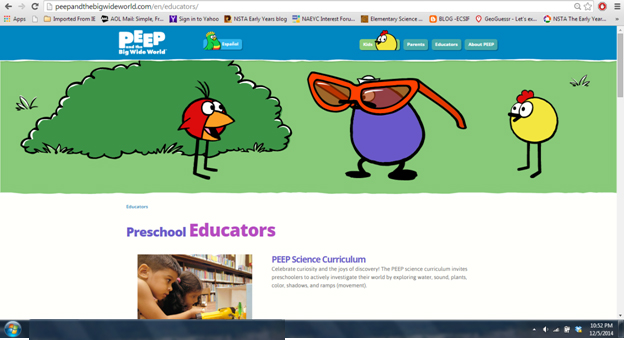 On the Peep and the Big Wide World website, a video clip taken in a family child care shows children investigating how different inclined plane (ramp) surfaces affect the movement of objects. Peep and the Big Wide World is an animated television series and a website with really good professional development resources for early childhood educators, guided by the Science Adviser, Karen Worth. The video clips on the topics of Science Talk, Learning Environments, Individualized Instruction, and Documentation and Reflection are my favorite part of the extensive library that includes curriculum on the topics of color, plants, ramps, shadows, sound, and water. A Self-Guided training handout and Facilitator’s Guide and PowerPoint slides generously show how to deepen one’s own and other’s understanding of the strategies in the curriculum units.
On the Peep and the Big Wide World website, a video clip taken in a family child care shows children investigating how different inclined plane (ramp) surfaces affect the movement of objects. Peep and the Big Wide World is an animated television series and a website with really good professional development resources for early childhood educators, guided by the Science Adviser, Karen Worth. The video clips on the topics of Science Talk, Learning Environments, Individualized Instruction, and Documentation and Reflection are my favorite part of the extensive library that includes curriculum on the topics of color, plants, ramps, shadows, sound, and water. A Self-Guided training handout and Facilitator’s Guide and PowerPoint slides generously show how to deepen one’s own and other’s understanding of the strategies in the curriculum units.
Using these kinds of resources helps me create effective learning environments that encourage science exploration.
 I see it all the time, children wondering what will happen if I….push on this ball, let go of this ball, put this ball in water, or throw this ball? What will happen if I…touch the paper gently with the paintbrush, shake the paint brush, put the brush all the way into the paint or put the brush into a different color?
I see it all the time, children wondering what will happen if I….push on this ball, let go of this ball, put this ball in water, or throw this ball? What will happen if I…touch the paper gently with the paintbrush, shake the paint brush, put the brush all the way into the paint or put the brush into a different color?
I Have Little Access to Professional Learning Programs Where I Live. Where Can I Turn to for Help?
By Carole Hayward
Posted on 2014-12-04
Sandy Gady has been an NSTA member for over 22 years. Her first teaching jobs were in small towns with no colleges or universities nearby. Therefore, Gady says that access to quality professional learning was limited, which is why her NSTA membership really came in handy. “When I was in a small town with no access to professional learning, the NSTA journals saved me,” she says. Gady credits her NSTA membership with helping her achieve National Board Certification. “Being a part of NSTA helped me figure out what is a big idea, how you break it down, and how you teach science in a meaningful way,” she says.
And, even though Gady now lives and works in an area with greater professional learning opportunities, she says she uses her NSTA membership just as much, especially in her role as an NSTA online advisor.
Gady: So many teachers here in Washington State live in rural communities and there is no other way to get better professional learning. I find that the NSTA web seminars are better than almost any class offered at a college or university. For instance, the American Chemical Society (ACS) and NSTA hosted a web seminar on candy and chemistry in September. I couldn’t pull away from it, it was so engaging. And the Next Generation Science Standards (NGSS) seminars have been terrific. I would say having access to the web seminars and the journals has allowed me to understand the science behind what I teach.
NSTA is kind of my backbone. When you take part in the NSTA Community Forums, you have access to the most fantastic people in the world when you’re trying to figure out what you want to do next with your teaching to take it to another level. When you say, ‘I need help and I have this idea, does anybody know of anything else I can do?’ you get valuable feedback from fellow teachers within 24 hours.
I’ve had student teachers in the last three years who haven’t heard about NSTA. I’ve told them about the association and all of the resources available to them. NSTA offers Student, Preservice, and New Teacher memberships, and does everything it can to make learning accessible to teachers. Now, many of my student teachers are using the NSTA Learning Center as part of the classes they’re teaching.
How else does your NSTA membership help you?
Gady: The NSTA Conferences are amazing. When you are from a small town and you walk into a regional conference, you are just blown away with the wide variety of resources that you didn’t even know existed. Having the vendors all in one place and being able to see what’s possible is a terrific opportunity that without NSTA wouldn’t exist.
In addition, any book that is published by NSTA Press is a quality book. For me, it really all goes back to professional learning. When I first stepped into a science classroom, I had a half-credit of science in my K–8 endorsement. Science education wasn’t deemed important in our state at that time. Therefore, I relied heavily on NSTA books for support. I still live by Bill Robertson’s The Stop Faking It series and Page Keeley’s Uncovering Student Ideas in Science. I have three sets of both series. One set I keep at school, one I keep at home, and one I loan to the National Board candidates I facilitate.
I am also really impressed with NSTA’s virtual conferences. NSTA doesn’t get old; it never ages. NSTA has always had a vision ahead of where everyone else is. There is no price you can put on that.
(Note from NSTA: Not a member of NSTA? Learn more about how to join.)
Jennifer Henderson is our guest blogger for this series. Before launching her freelance career as a writer/editor, Jennifer was Managing Editor of The Science Teacher, NSTA’s peer-reviewed journal for high school science teachers.
Recommend a resource for early childhood science and engineering education
By Peggy Ashbrook
Posted on 2014-12-01
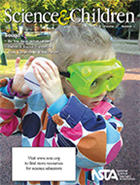 Guidance for effective science and engineering teaching can be found in the NSTA position statement on Early Childhood Science Education. Materials for science and engineering science explorations, such as teacher resource books, can support teachers and administrators in implementing the principles and declarations of the position statement. Many books claim to be that inquiry-based, well-researched, aligned with standards and developmentally appropriate content that you are looking for—but what is the evidence?
Guidance for effective science and engineering teaching can be found in the NSTA position statement on Early Childhood Science Education. Materials for science and engineering science explorations, such as teacher resource books, can support teachers and administrators in implementing the principles and declarations of the position statement. Many books claim to be that inquiry-based, well-researched, aligned with standards and developmentally appropriate content that you are looking for—but what is the evidence?
 The NSTA journal, Science and Children, publishes an occasional column called “Early Childhood Resource Review.” Column editor Ingrid Chalufour selects resources for review from those suggested by readers. The primary criteria for books is how well the author poses practical ways of addressing the NSTA position statement on early childhood science. The reviewers help us understand the value of the resource and how to get the most from it. Two columns recommending tools of inquiry for the classroom will be in the February 2015 and 2016 journals.
The NSTA journal, Science and Children, publishes an occasional column called “Early Childhood Resource Review.” Column editor Ingrid Chalufour selects resources for review from those suggested by readers. The primary criteria for books is how well the author poses practical ways of addressing the NSTA position statement on early childhood science. The reviewers help us understand the value of the resource and how to get the most from it. Two columns recommending tools of inquiry for the classroom will be in the February 2015 and 2016 journals.
Do you have a favorite book or other resource to suggest for consideration? Authors, don’t be shy. See the Science and Children Call for Papers page and scroll down to learn how to submit. Let other early childhood educators benefit from the resources you find most helpful.
 Guidance for effective science and engineering teaching can be found in the NSTA position statement on Early Childhood Science Education. Materials for science and engineering science explorations, such as teacher resou
Guidance for effective science and engineering teaching can be found in the NSTA position statement on Early Childhood Science Education. Materials for science and engineering science explorations, such as teacher resou
#NSTA14 Long Beach: Highlights from the Hall
By Lauren Jonas, NSTA Assistant Executive Director
Posted on 2014-12-01
 The Long Beach NSTA 2014 Area Conference on Science Education starts this week! We’ll be making ourselves at home at the Long Beach Convention Center in sunny California, December 4-6, 2014. In collaboration with the California Science Teachers Association (CSTA), we invite you to join us. Our conference theme is SCIENCE—Catch the Wave! Conference strands will focus on NGSS Implementation, Science: The Gateway to Common Core State Standards, and STEM Classrooms: Anytime/Anyplace/Anywhere.
The Long Beach NSTA 2014 Area Conference on Science Education starts this week! We’ll be making ourselves at home at the Long Beach Convention Center in sunny California, December 4-6, 2014. In collaboration with the California Science Teachers Association (CSTA), we invite you to join us. Our conference theme is SCIENCE—Catch the Wave! Conference strands will focus on NGSS Implementation, Science: The Gateway to Common Core State Standards, and STEM Classrooms: Anytime/Anyplace/Anywhere.
 We’ll kick things off on Thursday morning (December 4) with our keynote presentation (The Balancing Act of Environmental Education: Removing the Fear But Keeping Reality) by Julie Scardina at 9:15 am. Using a variety of animal ambassadors, Scardina will demonstrate that it takes a more sophisticated understanding of ecology, biology, and environmental science to save our planet’s biodiversity.
We’ll kick things off on Thursday morning (December 4) with our keynote presentation (The Balancing Act of Environmental Education: Removing the Fear But Keeping Reality) by Julie Scardina at 9:15 am. Using a variety of animal ambassadors, Scardina will demonstrate that it takes a more sophisticated understanding of ecology, biology, and environmental science to save our planet’s biodiversity.
Programming-wise, we’ve hand-selected and vetted more than 500 unique sessions, workshops, and presentations resulting in a diverse range of programming with something for everyone—from classroom teachers to administrators and informal educators at all age levels and interests. You can check out all the sessions online via the Session Browser or view the program (pdf).
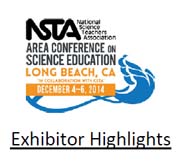 We would also like to recognize and thank our outstanding Exhibitors who have lots of exciting hands-on activities in store for you. We have more than 150 unique exhibits to visit and have put together nine pages of highlighted activities taking place in the Exhibit Hall over the course of the conference. You can also review all of the Exhibitors by taking a spin around the online floor plan, which includes a roster of exhibitors, a description of what they’ll be featuring, and where they’re located in the Exhibit Hall.
We would also like to recognize and thank our outstanding Exhibitors who have lots of exciting hands-on activities in store for you. We have more than 150 unique exhibits to visit and have put together nine pages of highlighted activities taking place in the Exhibit Hall over the course of the conference. You can also review all of the Exhibitors by taking a spin around the online floor plan, which includes a roster of exhibitors, a description of what they’ll be featuring, and where they’re located in the Exhibit Hall.
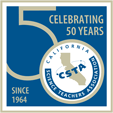 California teachers, be sure to drop by the CSTA booth, located in the Exhibit Hall B of the Convention Center (Booth 326). As the advocate for quality science education in California for more than 50 years, the California Science Teachers Association offers networking, professional development, and representation to assure state policies and legislation support you in inspiring your students. Stop by to meet them, get resources for implementing NGSS, and to join CSTA. They will have tickets available for purchase for the CSTA Night at the Aquarium of the Pacific, Thursday, 7:00–10:00 PM.
California teachers, be sure to drop by the CSTA booth, located in the Exhibit Hall B of the Convention Center (Booth 326). As the advocate for quality science education in California for more than 50 years, the California Science Teachers Association offers networking, professional development, and representation to assure state policies and legislation support you in inspiring your students. Stop by to meet them, get resources for implementing NGSS, and to join CSTA. They will have tickets available for purchase for the CSTA Night at the Aquarium of the Pacific, Thursday, 7:00–10:00 PM.
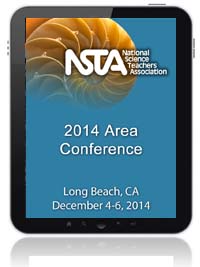 For the latest conference information, download the Long Beach Conference App. If you’re not already registered, there is still time to join us and you can register online 24/7. We’re excited to see you this week!
For the latest conference information, download the Long Beach Conference App. If you’re not already registered, there is still time to join us and you can register online 24/7. We’re excited to see you this week!
For questions about the Long Beach exhibits, please contact Jason Sheldrake, Assistant Executive Director, National Science Teachers Association at jsheldrake@nsta.org; or contact Jeffrey LeGrand, NSTA Exhibits and Advertising Associate, at jlegrand@nsta.org.
2015 National Conference on Science Education
The mission of NSTA is to promote excellence and innovation in science teaching and learning for all.
Follow NSTA
| |
|
|
|
 The Long Beach NSTA 2014 Area Conference on Science Education starts this week! We’ll be making ourselves at home at the Long Beach Convention Center in sunny California, December 4-6, 2014.
The Long Beach NSTA 2014 Area Conference on Science Education starts this week! We’ll be making ourselves at home at the Long Beach Convention Center in sunny California, December 4-6, 2014.
NSTA Members – Three Reasons We Are Thankful For YOU!
By Teshia Birts, CAE
Posted on 2014-11-26
As we prepare the turkey and brave the elements (some of us) for those last minute ingredients we forgot, this time of the year we give thanks for family and friends. NSTA is no different – we are very thankful for our members and here are just a few reasons why:
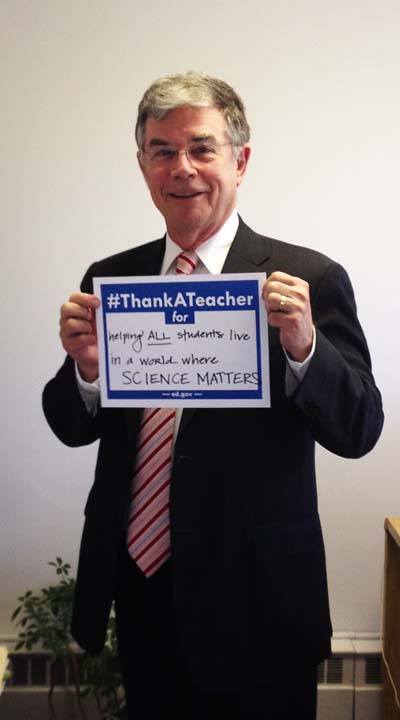
- There’s work to be done and our members help us get things done. Our volunteer leaders are second to none. From our board of directors, council members and standing committees to our advisory boards, task forces and ad hoc workgroups, NSTA may have the hardest working, most engaged members of any professional organization. NSTA would not be the organization is it without the strong foundation we have in our leadership.
- Our members are dedicated. They care about the future of science education and their profession. When it seems as though no one else cares about the content we create or the events and activities we plan, our members continue to be engaged. They are smart and they share that knowledge in our online communities, on listserves and as presenters during our conferences. Whatever it takes to move science education forward, NSTA members go the extra mile to deliver.
- NSTA members really do believe in the mission “…to promote excellence and innovation in science teaching and learning for all.” While it’s true that members join NSTA for different reasons and not all members join to give back to their profession, in the end they renew their membership and continue to do so because of what this organization represents and its value. And that is why we create content-rich, peer-reviewed journals, award-winning publications, five premier science education conferences, web seminars and a host of other products, benefits and services.
NSTA is grateful for our members every day!
On behalf of NSTA, I want to wish everyone a happy and joyous Thanksgiving.
As we prepare the turkey and brave the elements (some of us) for those last minute ingredients we forgot, this time of the year we give thanks for family and friends. NSTA is no different – we are very thankful for our members and here are just a few reasons why:

The Lab Out Loud Podcast for Thanksgiving: Top 12 Science Celebrity Episodes Edition
By Carole Hayward
Posted on 2014-11-25
 As schools across the U.S. take a break this week for the Thanksgiving holiday, NSTA members will find themselves in cars, airplanes, and trains traveling to be with family and friends. Make holiday travel more entertaining, and even edifying, by subscribing to the NSTA-supported Lab Out Loud podcast, which features the best in science education news and commentary.
As schools across the U.S. take a break this week for the Thanksgiving holiday, NSTA members will find themselves in cars, airplanes, and trains traveling to be with family and friends. Make holiday travel more entertaining, and even edifying, by subscribing to the NSTA-supported Lab Out Loud podcast, which features the best in science education news and commentary.
Wisconsin-based podcasting duo Dale Basler and Brian Bartel previously shared their top 12 favorite episodes of their award-winning podcast. For this Thanksgiving special, the hosts offer up a comprehensive list of science celebrities who have visited the podcast, including Kip Thorne, Executive Producer and Feynman Professor of Theoretical Physics, Emeritus, at the California Institute of Technology, who recently discussed the science behind the movie blockbuster Interstellar.
Get inspired with one of these science celebrity episodes:
- Teaching with @Interstellar: Our Conversation with Executive Producer Kip Thorne
- Demos, Resources and Inspiration from Steve Spangler
- Watching The History Inside You With Your Inner Fish (Neil Shubin)
- BBC’s Bang Goes the Theory
- The Sitcom Experiment (Bill Prady from The Big Bang Theory)
- Science We Can Watch (Kari Byron from the Mythbusters)
- Science We Can Listen To (They Might Be Giants)
- Paleontologist Scott from Dinosaur Train
- Mythbuster’s Adam Savage
- Neil deGrasse Tyson on Science Education
- Ed Begley Jr. on Science and the Environment
- Bill Nye Talks About Energy And More
Brian and Dale work hard on each episode, and they have a hard time selecting from the catalog of favorites. But when it comes to favorite holiday foods, it is not quite the same.
“Pecan pie doesn’t need a reason to be someone’s favorite,” said Dale. “When you’re that delicious, no explanation is necessary.”
Brian goes for more of the savory flavors:
“Leftover turkey ranks right up there with leftover pizza,” said Brian. “But being a good boy from Wisconsin, I also can’t turn down cranberries.”
More Time?
Read the Lab Out Loud blog, where the hosts provide insight on episode guests, discuss themes, and provide linked resources from each podcast.
Dale and Brian actually started podcasting in 2006, for the Wisconsin Society of Science Teachers in a show called Periodicity. You can still find all 52 episodes. Check out the archive.
Not a member of NSTA? Learn more about how to join.
Laura Berry of Cogberry Creative is our guest blogger for this series. Laura is a communications professional for the education community.




